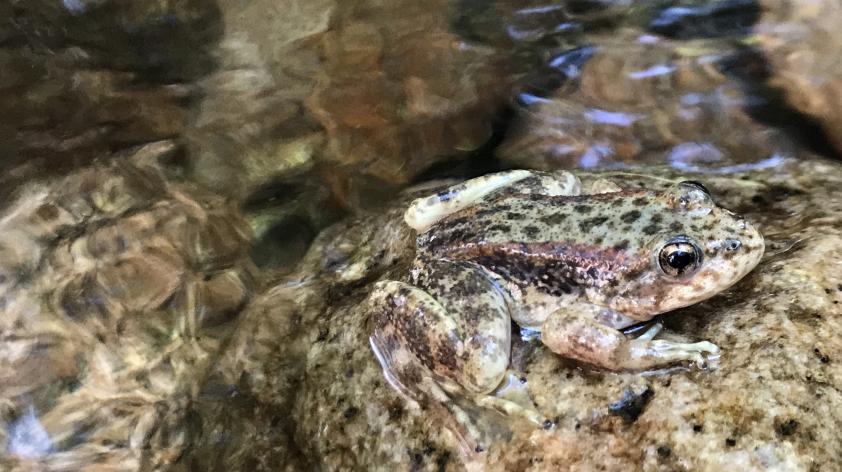
Let’s Go Chasing Waterfalls
As an undergraduate ecology major, field research isn’t new to me, but I’ve never experienced field work quite like this.
It’s 5:00 in the morning, and we are packing up three insulated cooler backpacks with 146 of our captive-bred mountain yellow-legged frogs, plus a bunch of ice packs and cryopacks. We load our piles of equipment into a vehicle and head off to the San Bernardino mountains to release these endangered animals back into one of their native streams. There, they will hopefully be able to thrive and contribute to our mission of bringing back this species from the brink of extinction.
This summer I am one of the lucky students working as a summer fellow at the San Diego Zoo Institute for Conservation Research. In this position I contribute to the hard work the mountain yellow-legged frog team does to conserve this species. My research this summer focuses on understanding how pre-release enrichment of captive environments (basically making captive environments more like wild environments) may help these animals succeed after they are reintroduced into the wild.
We make it to the trailhead leading to our release site in about two hours. From here the release pools are only a hop, skip, and a jump away (if “a hop, skip, and jump” means avoiding fallen barbed wire and rattlesnakes, treading in 55-degree stream water, and climbing waterfalls!).
Finally, at the first release pool, we take water and air temperature measurements, measure the pool, and collect other environmental data to ensure a suitable new home for these little froglets.
The first batch of frogs are ready to be released. The release itself is quick and somewhat visually anticlimactic, but it definitely isn’t spiritually anticlimactic. Everyone present feels the good work being done for this dwindling species, and shares in the joy of watching these frogs explore their native habitat for the first time.
The next three release groups at other connected pools in the stream bring the same enthusiasm and hope as the first. We watch the frogs jump from their Tupperware containers into the cool stream water. We leave the site feeling optimistic. We’ll be back in a few days to check up on how our frogs are doing in their new environment.
This incredible species is recorded to have dropped to as few as 200 individuals in Southern California. Frogs, along with other amphibians, are especially vulnerable to various forms of environmental change, including climate change, pollution, invasive species, and habitat loss.
For the rest of the summer we will climb waterfalls and walk the streams to monitor these young mountain yellow-legged frogs in their new habitat every week. By collecting regular data in the field, we will not only gain a better understanding of whether or not these animals are successful in their new home, but also will be able to answer my experimental questions about how captive environments contribute to survival and behavior in the wild.
Stay tuned for more updates about this amazing species!
Bailey Mccormick, Institute Summer College Fellow.
Photos by Talisin Hammond.













